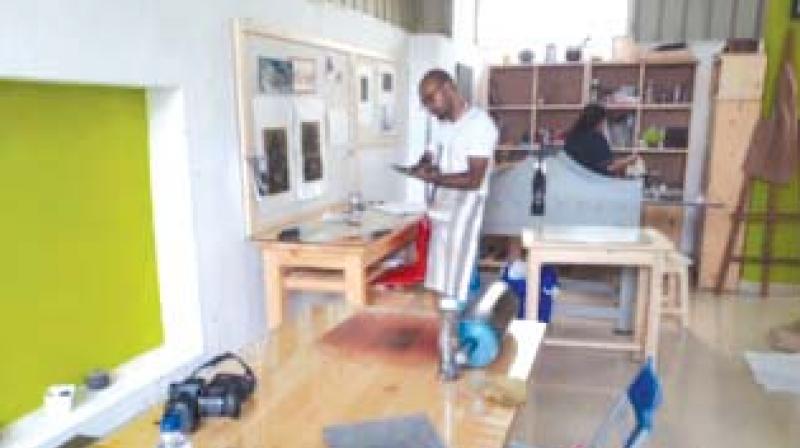Creation is always a painful process: Pranjit Sarma

As a country with an emerging art market, it’s heartening to see upcoming Indian artists with a platform to share their life’s work. The Young Talent Program, an undertaking by the Alliance Française is one such platform, curated by renowned sculptor Balan Nambiar, Franck Barthelemy and Ravi Cavale. This May, the featured artist is Pranjit Sarma, a young artist from Assam. Sarma, who is used to engaging with mediums like acrylic and oil, was enamoured completely by what he calls the “mysterious quality of printmaking,” a technique he studied at Bangalore University, under Professor Jayakumar G. Reddy.
Printmaking is now a shadow of what it once was – back in the days before digital printing took the art and design world by storm, printmaking ruled mass production. It was a means of communicaton and propaganda, with would share images of their land to draw in traders and merchants. Things have changed now and the once-sought after skill has far fewer takers, but hasn’t been completely extinguished either. And for Sarma, it’s a true passion.
“Life doesn’t always give you the results you want, you can’t expect that. To me, printmaking is like that. I’m surprised, sometimes, at the end of the process, because the result is completely different from what I had imagined or expected. There is less control over outcome.” This is the ‘mystery’ that draws artists to delve deeper into the medium’s potential.
His 33-piece show of largely black-and-white etchings draws us into Sarma’s own enquiries of the world – the role of the woman and the mother in society. Sarma’s father served in the military, as a result of which the artist spent his childhood more or less in transit, moving across the country. Having experienced firsthand the cultures and lifestyles in the North East, Sarma became a keen observer of the disparity between the sexes, growing more and more curious as to why women were treated differently and not offered equal opportunities in various walks of life. He had questioned this structure even as a child, only to receive platitudes like, “This is how the system is, this is how society works.”
In the end, Sarma found himself asking the fundamental question: What does motherhood mean? In his eyes, the mother is the ultimate creator, the greatest artist. “Our creation is based on pain, every mother goes through pain to create us. Without their contribution, we are nothing.” As an artist, Sarma wanted to represent the socio-political instability that continues to burden the North East. Working in black-and-white seemed apt, a stark testament to the harsh struggles the people still face. His work is a celebration of motherhood, a celebration of creation as well as the pain and sacrifice that comes with the process. Sarma examines the way divisions have been formed between men and women as a result of cultural and societal conditioning.
Through his work, he makes note of the woman as a powerful force, while highlighting the simultaneous struggles of womanhood too. Although this series is a translation of a very personal experience, the issue remains one which affects us all. Pranjit Sarma takes a subject of great vulnerability and translates it into a form which expresses the true strength and power of the female energy. The details in his monochromes make the works intriguing to the eye.

